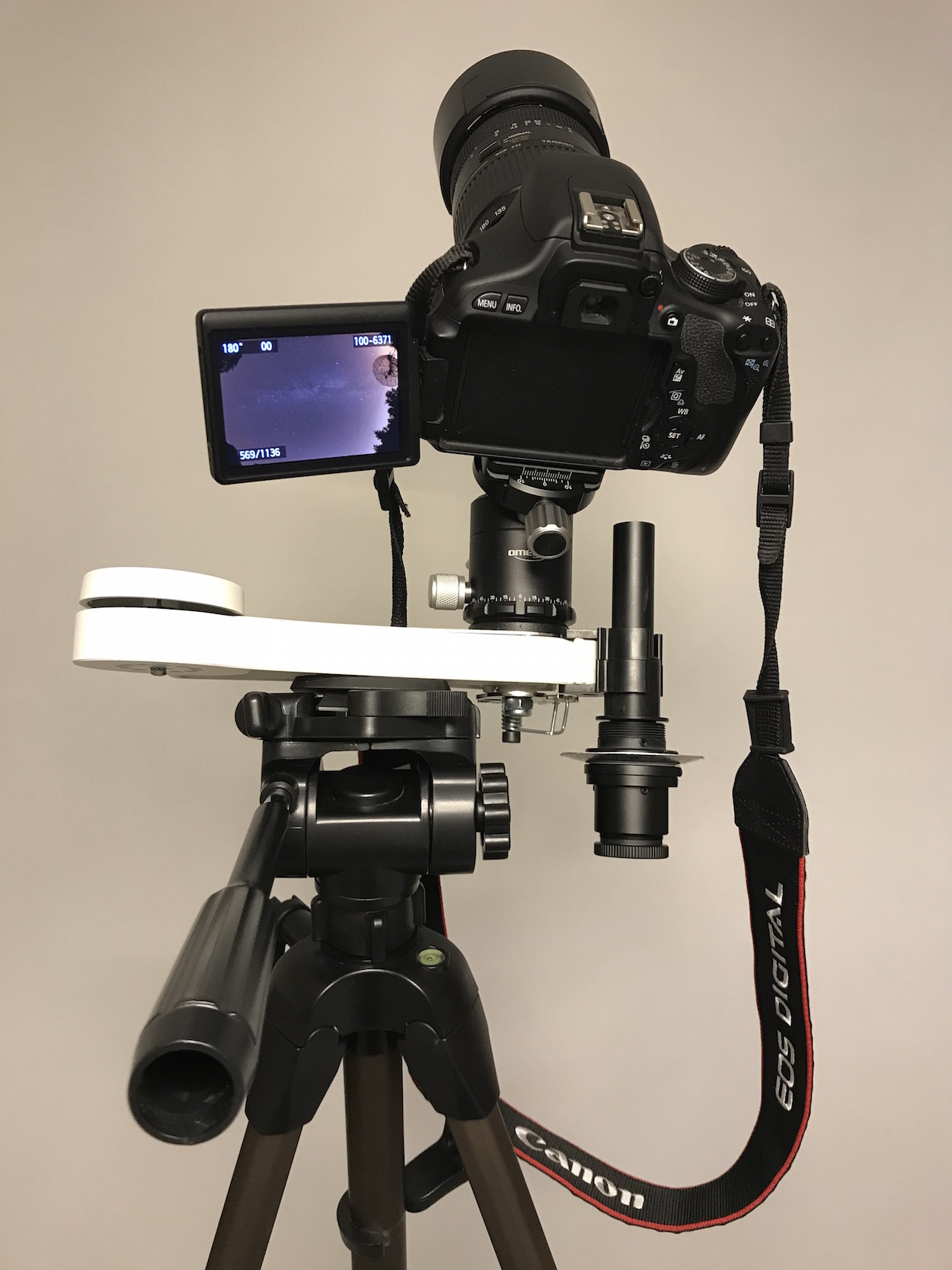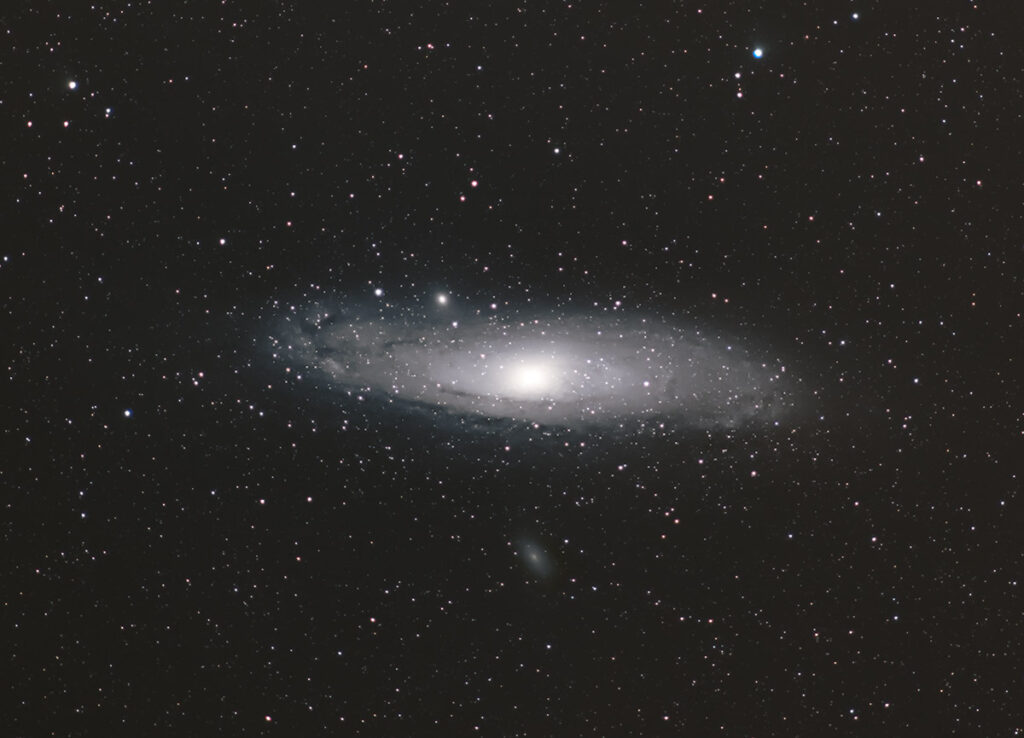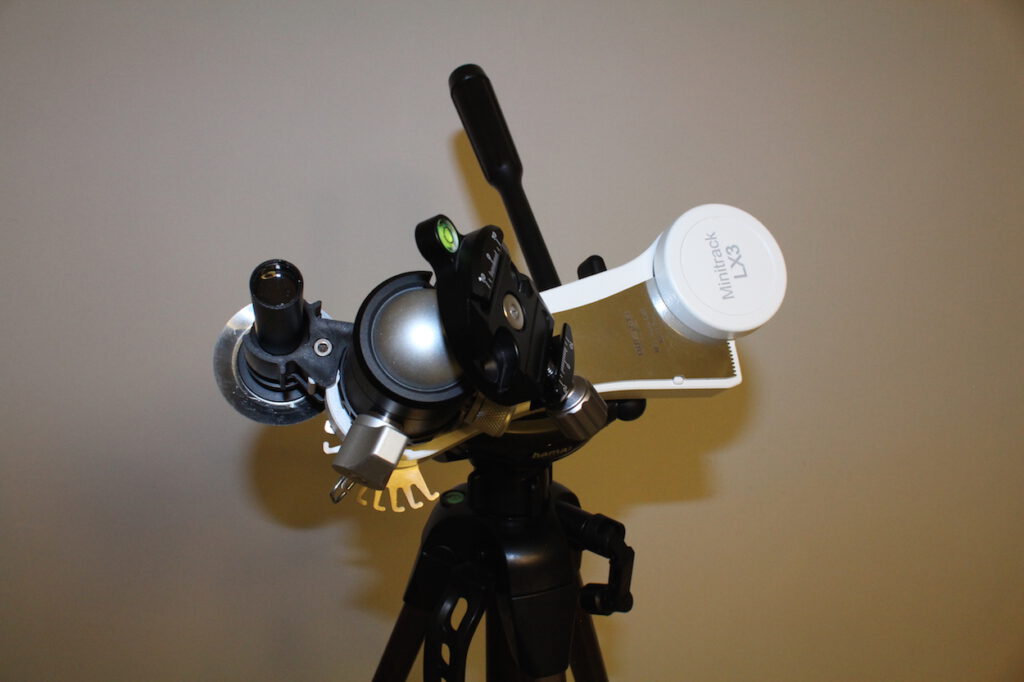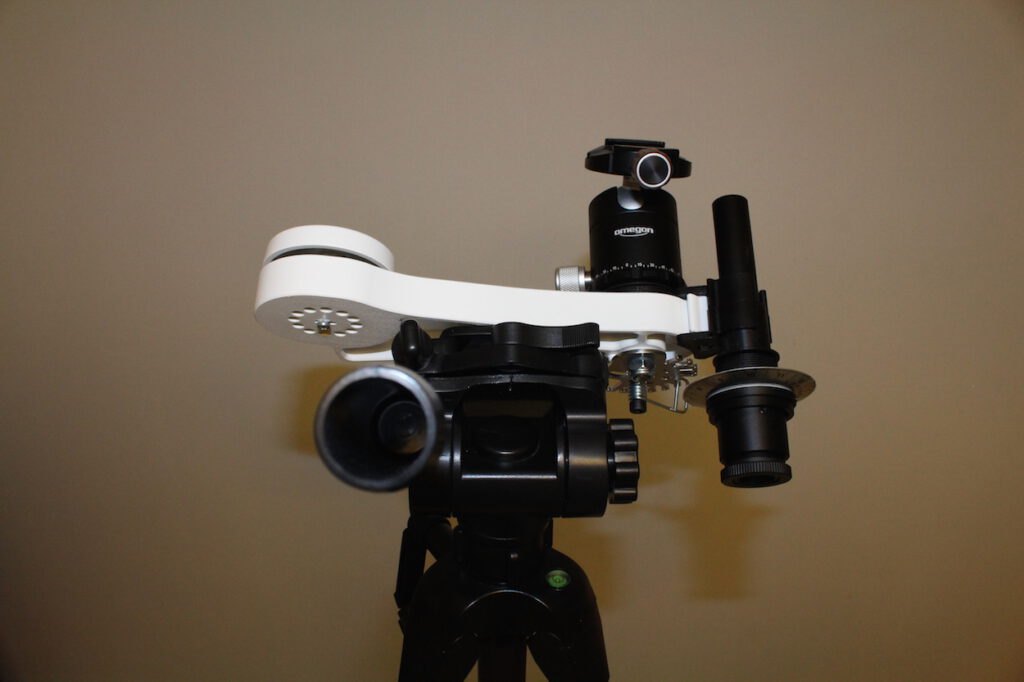Following the experience with Comet NEOWISE, and the relatively short exposures one can make with a simple tripod+DSLR camera combination (500 rule!), back in the Netherlands we immediately purchased a mechanical mount, the Omegon Minitrack LX3. This cheap device tracks the night sky up to an hour, as it rotates above our heads. Depending on the accuracy of the polar alignment and the focal length of the camera lens, this allows exposures up to a few minutes.
Finally, the beautiful Andromeda galaxy was in our reach! We spent a few nights experiencing the equipment, practicing polar alignment, and getting everything sharp. Just getting the galaxy in the picture using a 70-300mm lens and a rather unstable tripod with rough positioning capability was a challenge already! We actually used the standard 18-55mm Canon lens at 18mm to center our target, repeated this at 50mm, then installed the 70-300mm zoom lens at 70mm and zoomed in to about 300mm gradually. How to keep things sharp after all this and keeping your polar alignment – almost a mission impossible with this equipment. But we managed to make a decent series on the night of 18-19 August 2020 (no clouds, no moon) from Dwingeloo. Only to learn afterward that most of the work comes with processing the images, which in itself is a true (and sometimes very tiring, for the beginner) adventure…
Technical data:
Canon EOS 600D, Tamron 70-300mm, f/5.6
Omegon Minitrack LX3, tripod
75 light frames with 30s exposure
57 darks (yep, overdoing maybe!), 29 bias, 13 flats (morning, white shirt in front of the lens)
Calibration and initial processing in PixInshight (trial version); post-processing in Photoshop
This was our gear:
We love the Minitrack LX3, it is easy to use, cheap, and very portable, but it has some obvious limitations (see e.g. below). We will mostly use it for wide-angle sky photography while traveling.
The camera gets easily in the way of the polar finder, so when the camera or a new lens is installed there is no way to refine the polar alignment.



